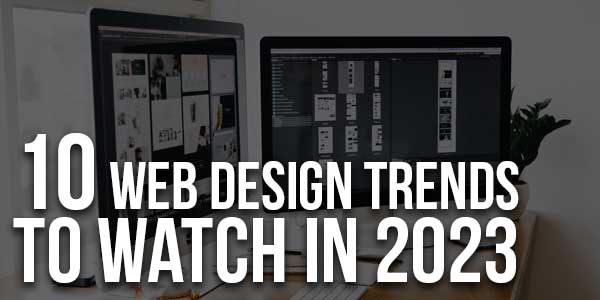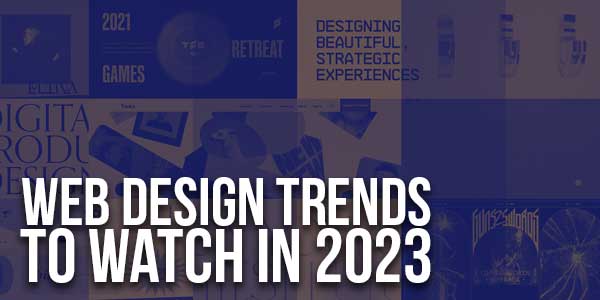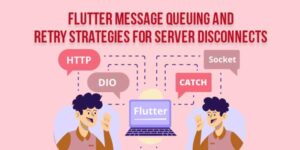
As the web design industry continues to evolve it is essential for us all to stay ahead of the curve. In this blog post, we’ll be exploring some of the most exciting and innovative web design service trends that are transforming how websites look and function in 2023. From Minimalism 2.0 designs that focus on delivering a simplified but memorable experience to advancements in AI UI solutions around digital settings, staying up-to-date with current trends can help you make your website stand out from the competition. So let’s dive into it!
Table of Contents
Responsive Design:
The rise of mobile devices has undoubtedly changed the way we interact with the web, making it more important than ever for websites to have responsive design. With mobile-first web design, designers prioritize the needs and constraints of smaller devices, ensuring that the site looks and functions just as well on a smartphone as it does on a desktop computer. This approach has become increasingly popular, as more and more people access the web via their phones or tablets. By implementing responsive design and layout, websites can guarantee compatibility with devices of any size, creating a seamless user experience for visitors no matter how they choose to access the site.
Accessibility Focused:
Accessibility is crucial when it comes to designing websites. Making websites more accessible ensures that everyone, regardless of their abilities, can navigate and understand the content. To achieve this, designers should follow certain guidelines that make websites more user-friendly for all. For example, designers can add alternative text descriptions to images, use distinguishable color contrasts for text, and incorporate keyboard navigation options. By incorporating these accessibility features, website visitors with disabilities can easily access the content and enjoy the same experience as everyone else. Ensuring accessibility for all is essential for creating a truly inclusive online community.
Using 3D Graphics & Animation:
Websites are the face of businesses in the digital age, and having an engaging website design is essential for staying relevant in today’s market. One way to enhance the user experience of a website is by incorporating 3D graphics and animation. These visual elements can capture the attention of visitors and create an immersive experience that keeps them engaged. The use of 3D graphics and animation also allows for a greater level of creativity in web design. By bringing products and ideas to life through dynamic visuals, businesses can showcase their brand identity in a memorable and impactful way. The incorporation of 3D graphics and animation is a rising trend in web design, and it’s easy to see why. With its ability to enhance user experience, create immersive designs, and showcase a brand’s identity in a memorable and impactful way, the use of 3D graphics and animation is revolutionizing website design.
Exploring Eye-Catching Typography:
Typography has become an essential element in web design. It’s not just about choosing the right font anymore; it’s about creating a visually appealing experience that attracts visitors. Eye-catching typography can help to highlight your website’s message and capture the attention of your audience. There are countless options for designers to choose from, with new typefaces and font styles constantly being developed. Bold fonts, sans serif styles, unique and unconventional typography- the possibilities are endless.
Minimalism & Clean Design:
In an era where we are constantly bombarded with information, sometimes the best approach is to simplify everything. This is where minimalism in web design comes in handy. Clean lines, spacious layouts, and a focus on whitespace all contribute to a visually-appealing website that is easy to navigate. Adopting this approach not only makes your site look better but also improves functionality. Visitors can easily find what they are looking for without getting bogged down by too many distracting elements. So, if you want to create a website that truly speaks volumes, embrace the minimalist approach and let your design speak for itself.
AI-Driven Design:
The emergence of artificial intelligence has revolutionized almost every industry, and web design is no exception. With AI-driven design, businesses can leverage machine learning algorithms to create the perfect user experience for their website. Through analyzing user behavior and preferences, AI-powered design tools can generate personalized content and designs that are tailored to each individual. This not only enhances the user experience but also effectively increases engagement and conversion rates. By incorporating machine learning into the web design process, businesses can streamline their efforts and achieve optimal results, all while saving valuable time and resources. With AI-driven design, the possibilities for creating a truly unique and dynamic website are endless.

Voice User Interfaces:
As technology continues to advance, we are witnessing a shift toward voice user interfaces (VUI) becoming more prevalent. With the rise of smart speakers like Amazon’s Alexa and Google Home, more people are relying on voice search and voice commands to access information and complete tasks. This means that businesses and website owners need to optimize their websites for voice search to ensure that their content is accessible through this medium. By incorporating VUI optimization techniques, such as using natural language, utilizing structured data, and focusing on local search, website owners can cater to a growing demographic that prefers to interact with technology through voice commands.
Virtual Reality Content Integration:
Web design has always been about creating a visually engaging and memorable experience for users. With the rise of virtual reality technology, designers now have the opportunity to take their creations to a whole new level. By incorporating virtual reality content into web design, websites can offer a fully immersive experience to users, transporting them to another world without ever having to leave their homes. From product demonstrations to virtual tours, the possibilities for integrating this technology are endless. As more and more businesses look to leave a lasting impression on their customers, virtual reality content integration is sure to become a key player in the future of web design.
Conclusion:
Ultimately, it is clear that responsive design, accessibility focus, the use of 3D graphics, animation and color psychology, eye-catching typography, minimalism and clean design, AI-driven design, voice user interfaces, and virtual reality content integration are all essential components of an effective web design. Work with a web design agency and consider carefully when designing a website to ensure the online experience is as engaging and immersive as possible. The right combination of these elements will help craft a website that not only looks modern but provides a great user experience as well. In the end, great web design can make or break any brand’s digital identity and it’s important to prioritize quality and thoughtfulness in order for things to turn out as expected. Without these key components – responsive design, accessibility focus, and more – websites are essentially ineffective tools with the visual appeal but no function.

 About the Author:
About the Author:
















Be the first to write a comment.